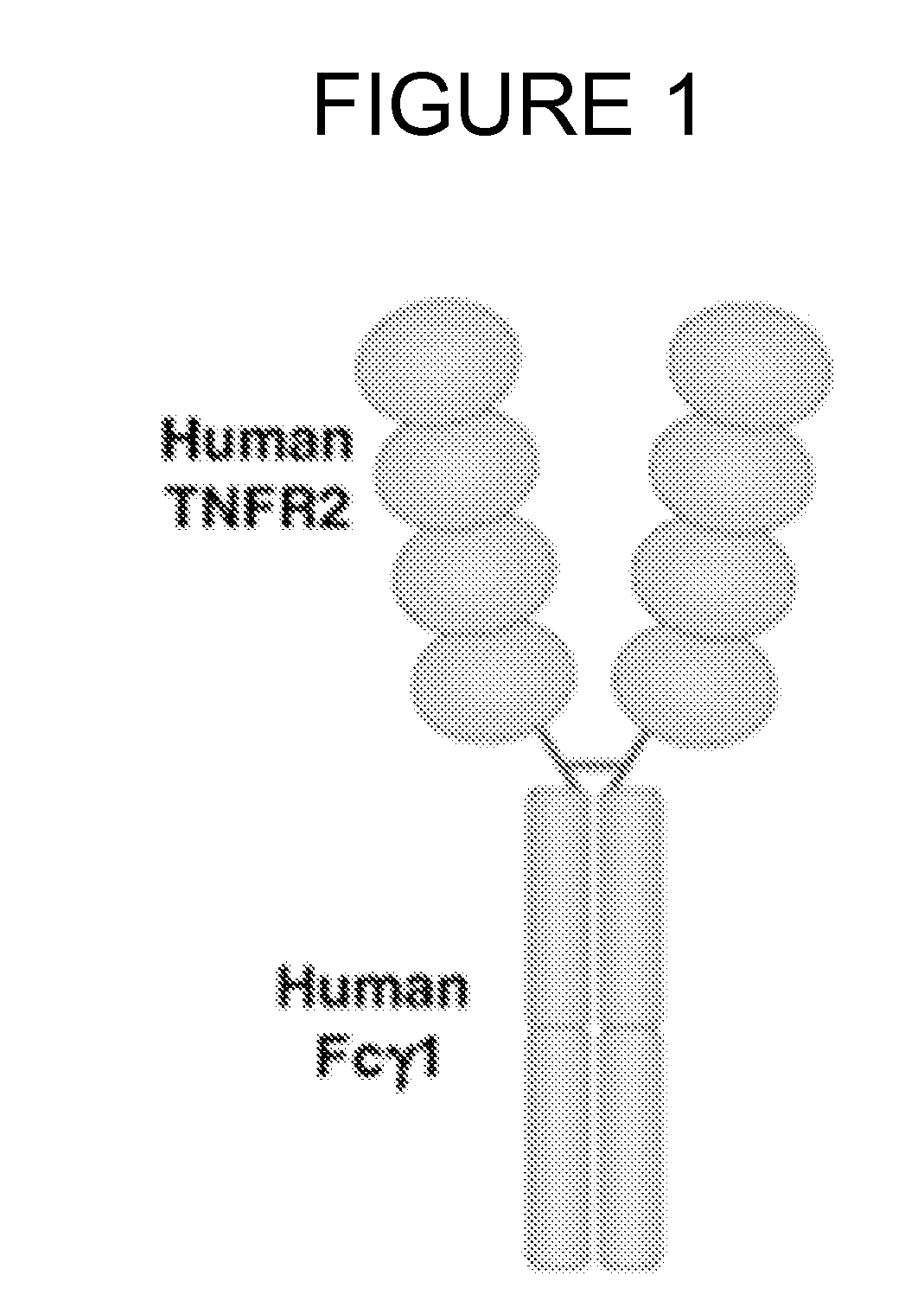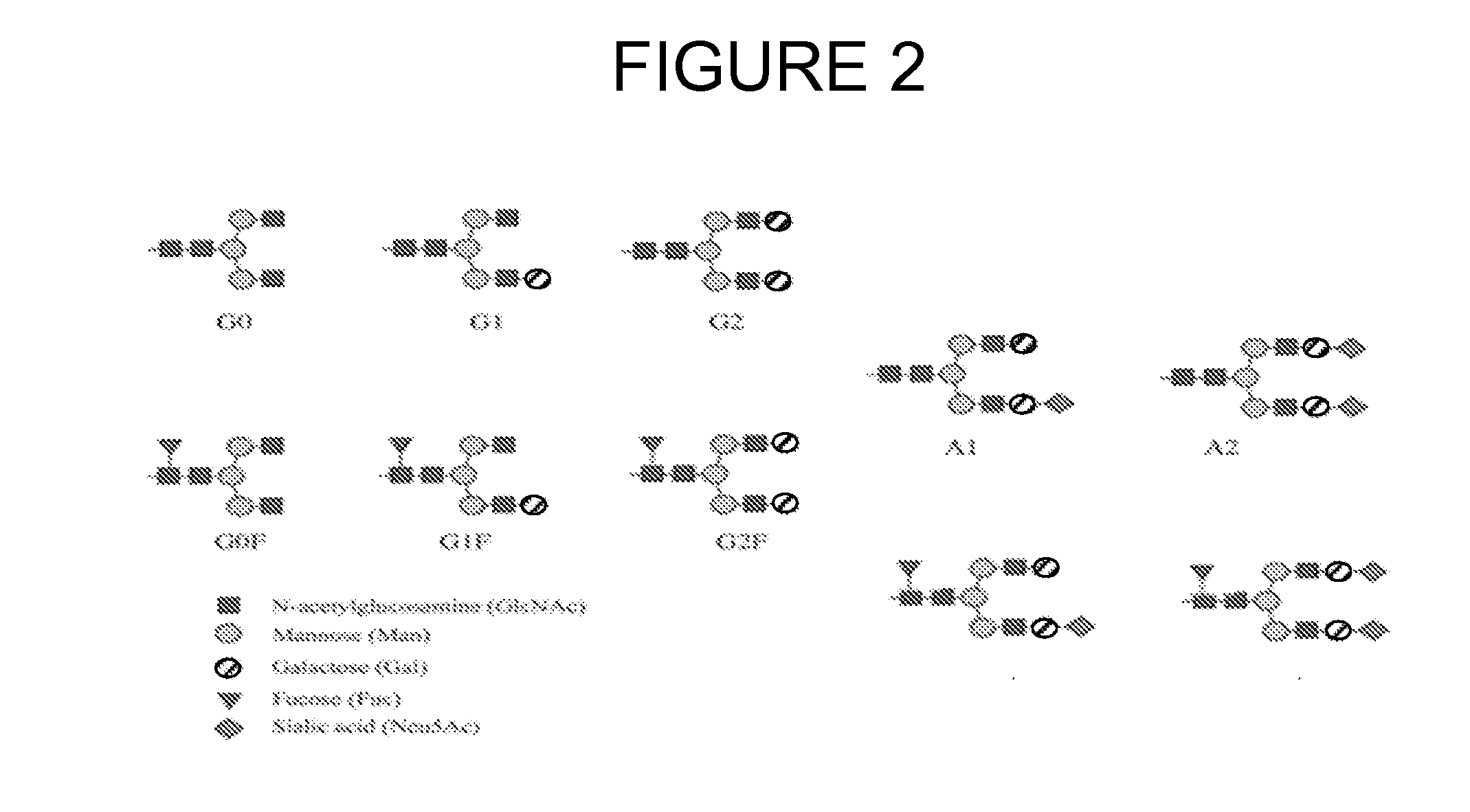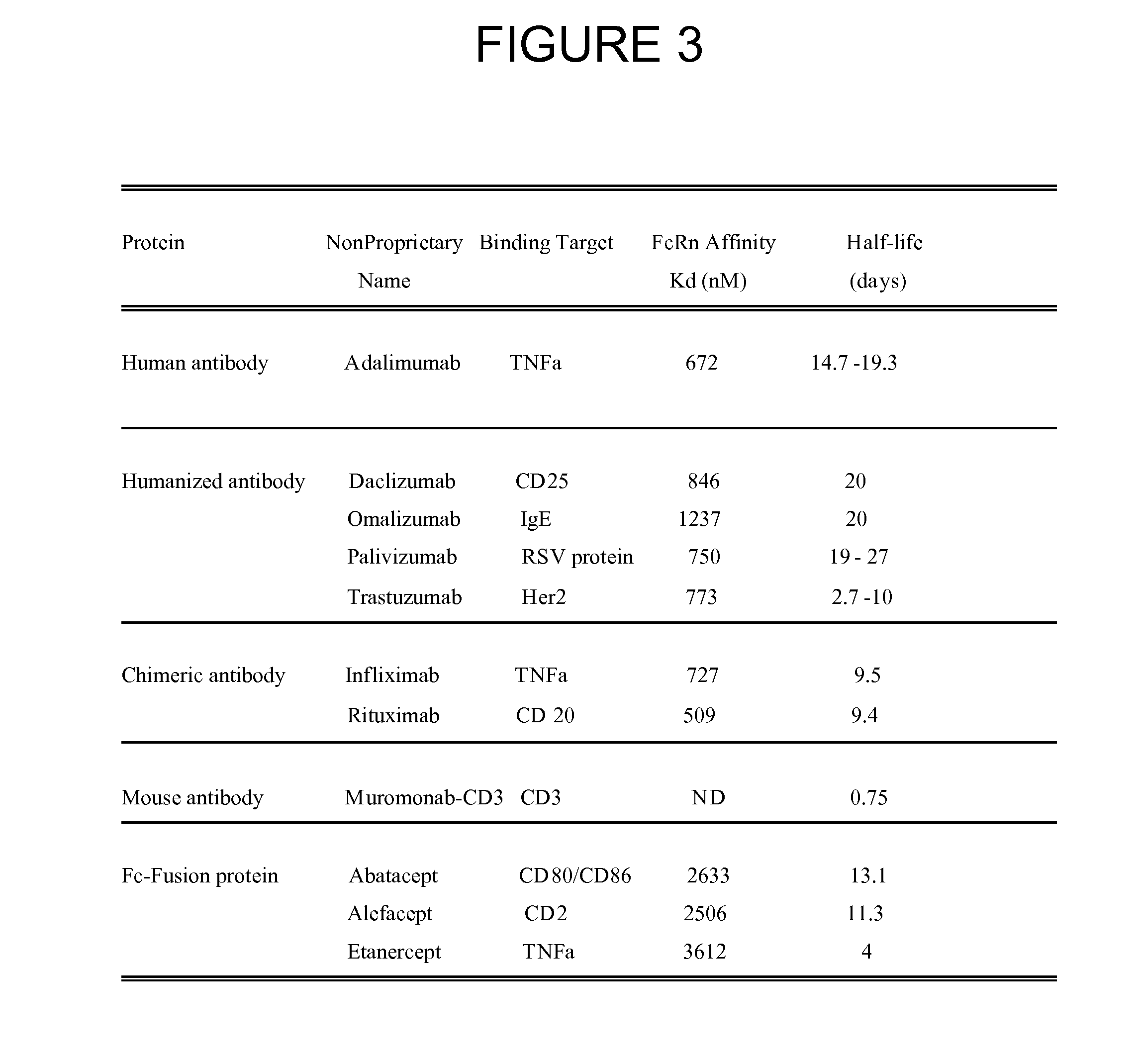Modified fc fusion proteins
a technology of fusion proteins and fusion proteins, which is applied in the direction of transferases, immunological disorders, antibody medical ingredients, etc., can solve the problems of decreased patient compliance, short serum half-life, and inadequate serum-life-time compared to fc fusion protein therapeutics, and achieve enhanced fc fusion protein population and population of fc fusion proteins.
- Summary
- Abstract
- Description
- Claims
- Application Information
AI Technical Summary
Benefits of technology
Problems solved by technology
Method used
Image
Examples
example 1
Assay for Multiple Charged Variants of Etanercept and its Desiaylated Forms with Isoelectric Focusing Polyacrylamide Gels
[0175]Glycan heterogeniety of Etanercept that results from incomplete glycan biosynthesis can be visualized by analyzing the protein, in its native state, using isoelectric focusing with polyacrylamide gels impregnated with polymeric ampholines. Acrylamide gels of this type provide a continuous pH gradient that allows the protein isoforms to be separated from one another based on their isoelectric point when subjected to an electric field. The number of sialic acid residues on the glycans of the protein greatly influences the net ionic charge on the molecule. Those species of the protein that have higher levels of sialic acid tend to have a more acidic IEP. Protein forms that contain lesser amounts of sialic acid will have more basic (higher pH) IEP. The resolution range that is employed for analysis of Etanercept is pH 7.0 to pH 3.5. The result of a representativ...
example 2
Glycoprofiling of N-Linked Glycans on Commercial Enbrel and Determining the Potential Susceptibility of the Glycans for Glycotransferase Remodeling
[0180]In order to determine the extent of incomplete glycan chains that are present on commercial Etanercept quantitative analysis of the glycans on the protein is determined Commercial Enbrel (obtained from the pharmacy) is treated with PNGase F digestion, followed by reductive amination in the presence of 2 aminobenzamide (2AB), followed by normal phase-HPLChromatography (Bigge, J. et al. Anal. Biochem. 230:229-38, 1995). Identification of the released and labeled glycans is made using glycan standards of known structure and retention times. Quantification of the relative amounts of each structure is made by measuring the fluorescent signal using the chemically linked 2AB as a reporter group on the reducing end of the glycan.
[0181]The resulting analysis (FIG. 5, top panel), shows that the glycans on commercial Enbrel are an extremely he...
example 3
Glycoengineering Etanercept with Sialyltransferase (ST6) Ex Photobacterium Damselae, Pd2,6ST, and Bovine β4GalT; Determination of Optimal Reaction Time and Enzyme Concentration on an Analytical Scale
[0186]The sialyltransferase Pd2,6ST from Photobacterium damselae has high specific activity toward a variety of low molecular weight carbohydrates, oligosaccharide structures and gangliosides. The Pd2,6ST enzyme was chosen for glycoengineering of Etanercept because it has a high specific activity and may be produced in large quantities as a recombinant product in bacterial expression hosts. In order to determine the optimal reaction conditions that give complete or near complete coverage of available galactose residues, a series of analytical-scale reactions were carried out with varying concentrations of the enzyme and reaction times. The progress of the sialylation reaction was monitored using IEF acrylamide gel analysis as described in above examples. Glycoprofiling analysis of etaner...
PUM
| Property | Measurement | Unit |
|---|---|---|
| half life | aaaaa | aaaaa |
| half life | aaaaa | aaaaa |
| half life | aaaaa | aaaaa |
Abstract
Description
Claims
Application Information
 Login to View More
Login to View More - R&D
- Intellectual Property
- Life Sciences
- Materials
- Tech Scout
- Unparalleled Data Quality
- Higher Quality Content
- 60% Fewer Hallucinations
Browse by: Latest US Patents, China's latest patents, Technical Efficacy Thesaurus, Application Domain, Technology Topic, Popular Technical Reports.
© 2025 PatSnap. All rights reserved.Legal|Privacy policy|Modern Slavery Act Transparency Statement|Sitemap|About US| Contact US: help@patsnap.com



